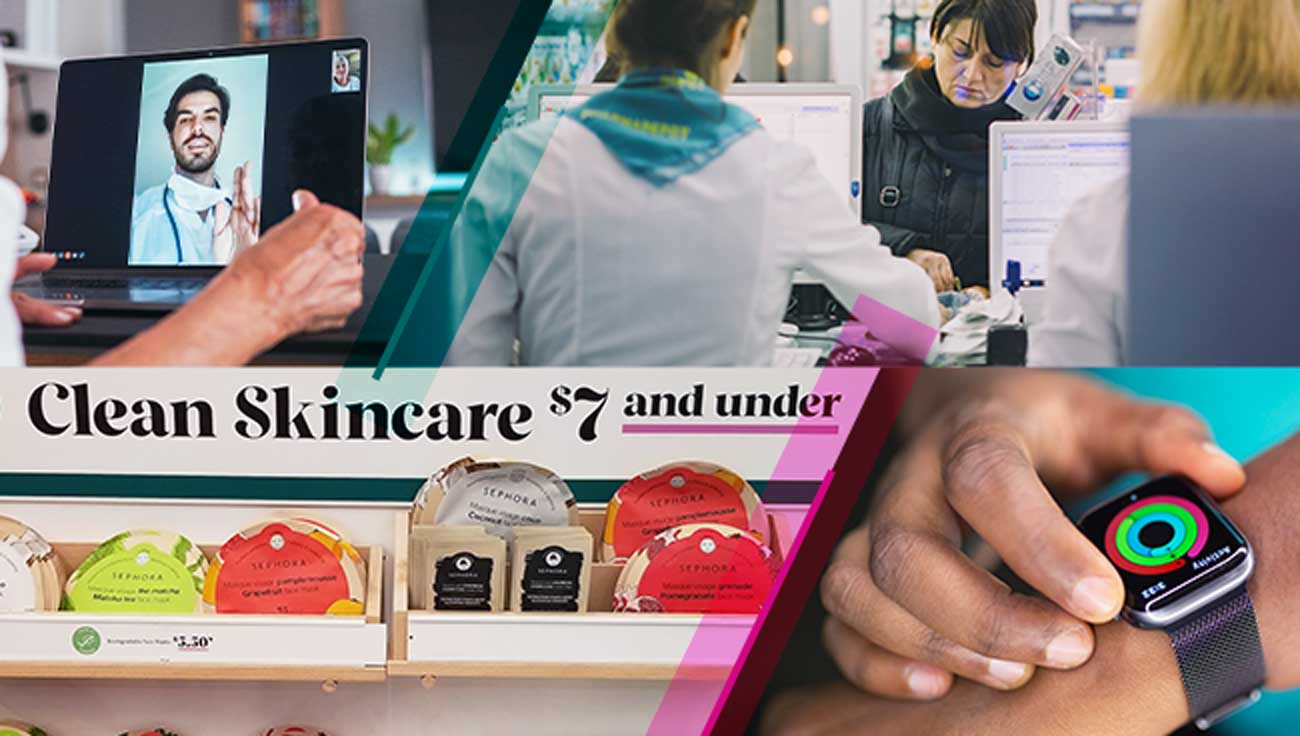Good-health practices – including wellness products, services and treatments – are now a staple of many retail formats, and consumers are increasingly taking them for granted. We looked back at our WELLness research of the past year to see what The Future of Wellness holds. Following are our five predictions.
Retail Wellness is Healthier Than Ever
WSL Strategic Retail has been keeping close tabs on the Big Business of WELL since 2014, when we launched our first national How America Shops® survey on the movement. In the years that followed, we returned to the research, updating and customizing our questions to consider changing needs and events, from the pandemic to inflation.
The U.S. retail wellness industry was estimated to be worth $450 billion, according to McKinsey & Co research. In 2023, we anticipate further, significant growth in the retail WELLness industry as it reaches into new categories and channels.
Here’s how.
Trends for Wellness in Retail in 2023
Based on our WELLness research in 2022, including our Retail Safari® in-store wellness explorations, we’ve identified the five trends we believe will shape the retail wellness market in 2023.
1. Consumers workout anytime, anywhere –
Virtual workouts such as those offered by Peloton and Lululemon Mirror have made it so consumers can get a guided exercise session without leaving their homes. Many, in fact, are getting a heck of a workout on the metaverse via virtual reality boxing, rock climbing, and other options. The result is consumers have expanded their thinking about where, when, and how to exercise. Retailers can seize on this change by putting potential workouts right in front of their customers.[1] As revealed in our Retail Safari®, Dick’s House of Sport includes an outdoor ice rink, and inside, customers are encouraged to prolong their trips by testing out exercise equipment or checking their swings on a simulated putting green. Retail should consider incorporating metaverse or virtual reality options as well.
2. Consumers are visiting the doctor, anytime, anywhere –
We expect more retailers will be adding wellness services and centers in 2023 as fewer people go to the doctor’s office in search of faster, more spontaneous and more affordable care.[2] In 2022, 45% of consumers told us they sought care at retail clinics – that’s up +18 percentage points from 2018. Three-quarters of shoppers told us they trust the care they get in these clinics, with CVS being the most used (by 50% of customers).
3. Pharmacists need backup.
Pharmacists, especially in drug stores, are overburdened by demands for vaccines and by calls to insurance providers, leaving little time for patient care with the consumers at their pharmacy windows. Nearly one-fourth of shoppers (24%) want the retail pharmacist to be more accessible; 23% want to visit them in private settings so they can discretely answer personal questions. This latter wish underscores an opportunity to build trust: While 91% of consumers visit a retail pharmacist, just 57% trust them (that’s a 34-point gap!).[3] Could it be that they’re unsure if they are interacting with the actual pharmacist at the window?
4. More brands and retailers will mind mental health –
Four in 10 of all consumers (41%) experience depression and anxiety, and we expect an increasing percentage of them to seek treatment at retail. Generation Z will drive much of this demand: 59% experience anxiety and depression — 15 percentage points higher than Millennials and Gen X.[4] A good example of how to speak openly to these younger consumers can be seen on the Pink floor at Victoria’s Secret, while CVS is offering mental health services in its Minute Clinics in three states. Retailers and brands can seize this opportunity to acknowledge the mental health needs of their customers.
5. Skincare will outshine makeup –
Data from Statista reveals that Skincare sales represent 41% of the global cosmetics market, compared with 16% for makeup. In the U.S., skin care revenue is projected to reach $188 million by 2026. This is not just an opportunity for skincare brands: More than one-third of Gen Z, Millennial and Gen X consumers intentionally eat foods for healthier skin, hair and nails, and they take targeted vitamins for skin care. (Actual figures 36%, 33% and 38%).[5]
6. The early bird special will get the sales –
More consumers are eating their final meals of the day earlier, and that can disrupt retail as much as restaurant schedules. A key cause is the growing practice of intermittent fasting, which requires up to 16 hours between the last and first meals each day. Nearly 75% of consumers have tried it. However, the prevalence of digital wellness wearables that monitor sleep. contributes, too, because consumers are more aware of how their meals effect their sleep. One-third of all consumers told us they use apps and devices to track fitness, and 25% use them to monitor their diet/nutrition and sleep.[6]
Build Your Business with Custom Market Research from WSL
WSL updates our Big Business of WELL shopper analysis regularly, by surveying shoppers on what’s next and updating past sentiments, so retailers and brands can be a part of the Next WELLness Frontier. Contact us for more.


